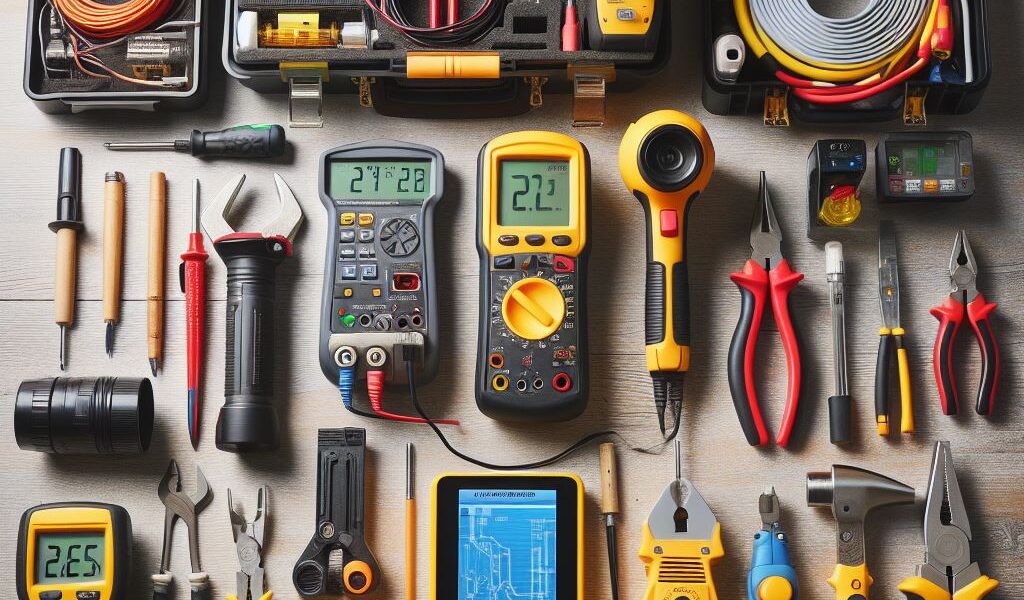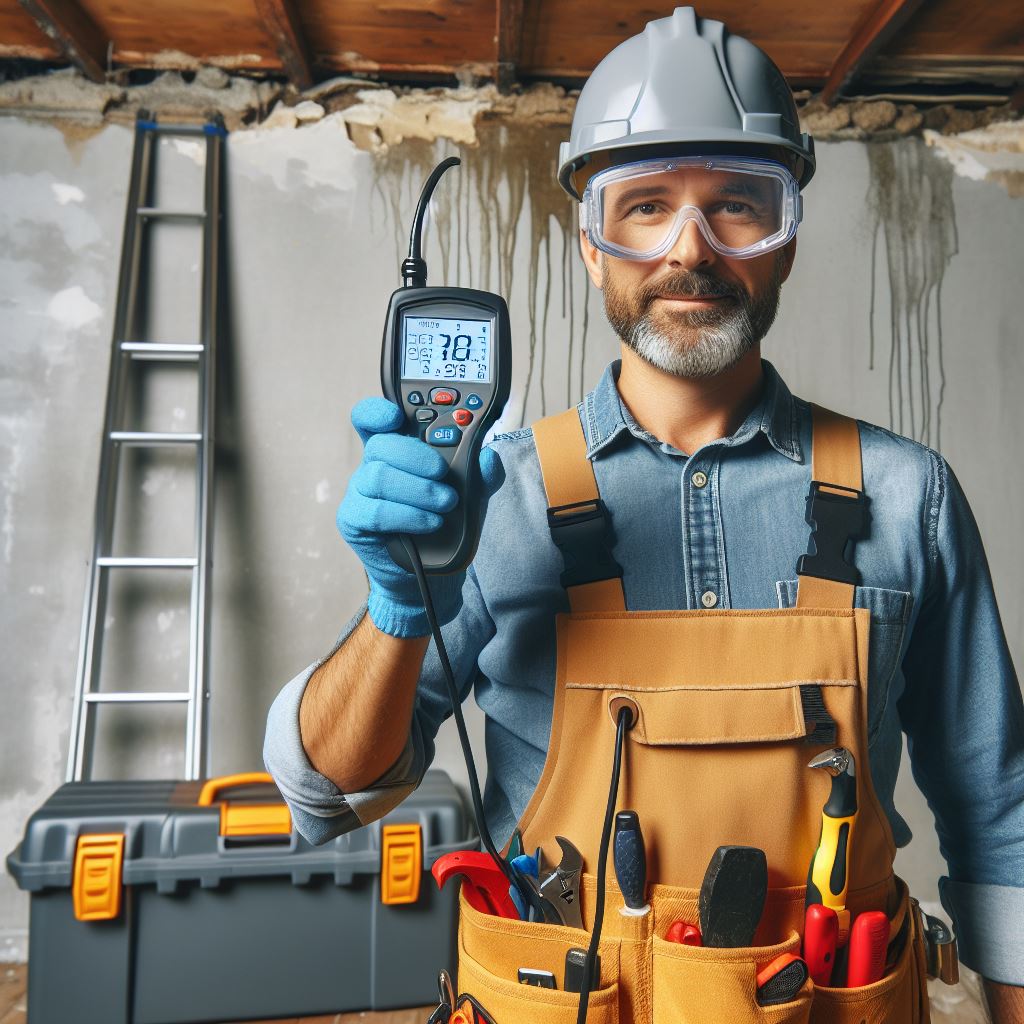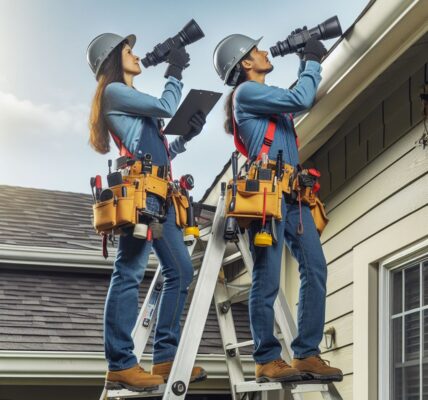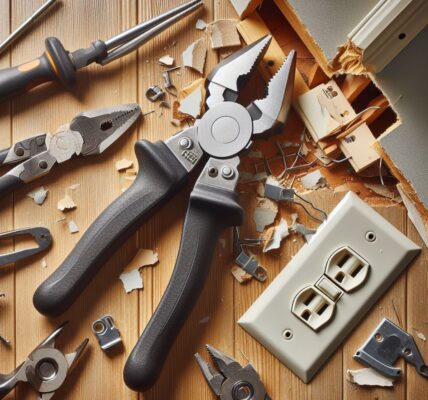Essential Tools for Home Inspectors
Home inspection is a crucial step in the process of buying or selling a property. It involves a thorough examination of a house or building to identify any potential issues or defects. To perform this task effectively, home inspectors require a set of essential tools. These tools enable them to assess various aspects of a property, including its structure, electrical systems, plumbing, and more. In this article, we will discuss the tools that are necessary for a home inspector to carry out their job efficiently.
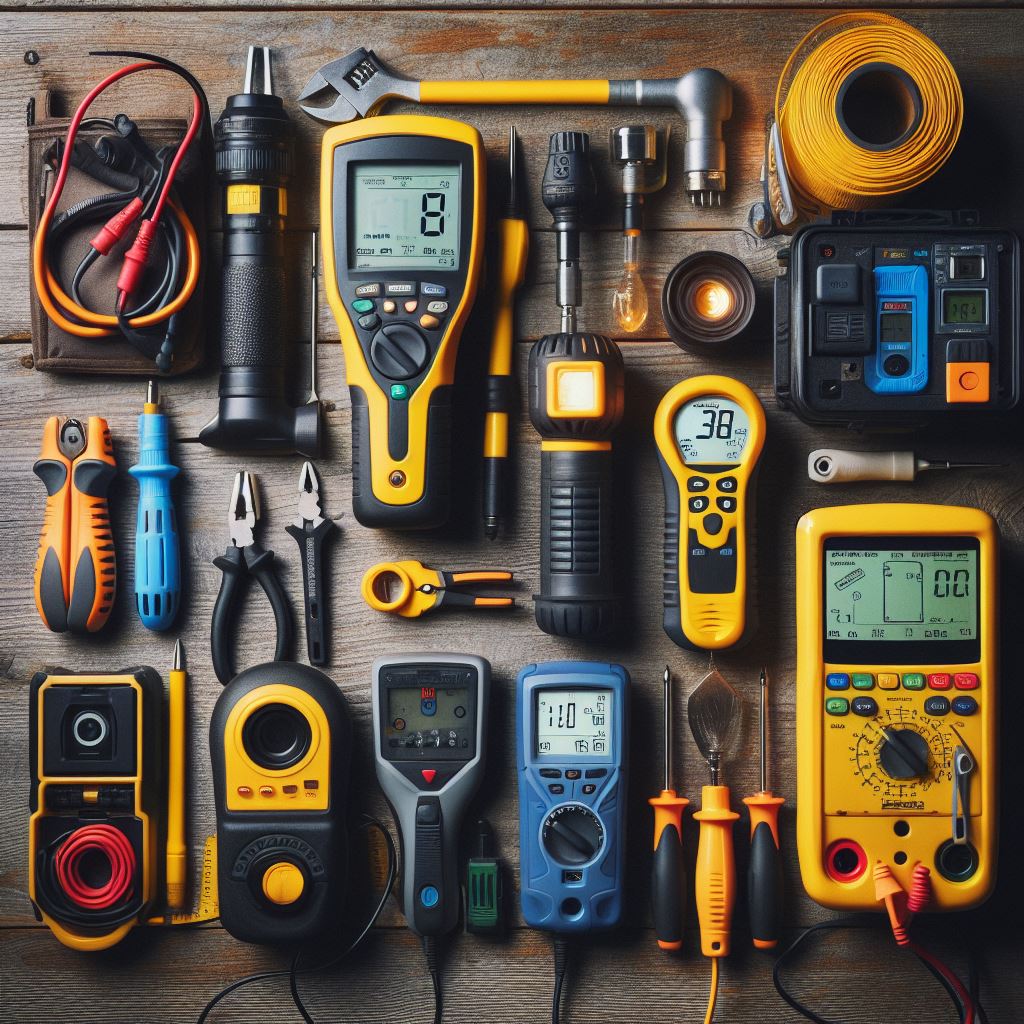
One of the most fundamental tools for a home inspector is a flashlight. This simple yet indispensable tool allows inspectors to illuminate dark areas and examine hard-to-reach places. A high-quality flashlight with a strong beam is essential for identifying potential issues in crawl spaces, attics, and basements. Additionally, a flashlight with an adjustable focus can help inspectors to examine objects at different distances with precision.
Another essential tool for home inspectors is a moisture meter. This device is used to measure the moisture content in various materials, such as wood, drywall, and concrete. By detecting excessive moisture, inspectors can identify potential water damage or mold growth. Moisture meters come in different types, including pin-type and pinless meters. Pin-type meters require the insertion of pins into the material being tested, while pinless meters use sensors to measure moisture without causing any damage.
A digital camera is also a must-have tool for home inspectors. It allows them to document their findings visually and provide evidence of any issues discovered during the inspection. High-resolution images captured by a digital camera can be included in the inspection report, providing a clear visual representation of the property’s condition. Additionally, a camera with video recording capabilities can be useful for capturing live footage of any defects or problems that may not be easily visible in static images.
To assess the electrical systems in a property, home inspectors need a voltage tester. This tool is used to determine whether electrical circuits are live or not. By testing outlets, switches, and other electrical components, inspectors can identify potential safety hazards, such as faulty wiring or improper grounding. A non-contact voltage tester is particularly useful as it allows inspectors to detect live wires without direct contact, ensuring their safety during the inspection process.
A ladder is an essential tool for home inspectors, enabling them to access areas that are otherwise difficult to reach. Inspectors often need to climb onto roofs, inspect chimneys, or examine high ceilings. A sturdy and reliable ladder is necessary to ensure their safety and facilitate a thorough inspection. Additionally, a telescoping ladder can be a practical choice as it can be easily adjusted to different heights and is more portable than traditional ladders.
Lastly, a comprehensive set of hand tools is essential for a home inspector. This includes screwdrivers, pliers, wrenches, and other basic tools that allow inspectors to open panels, remove covers, and access various components of a property. These tools enable inspectors to examine electrical systems, plumbing fixtures, and other areas that may require closer inspection.
In conclusion, home inspectors require a range of essential tools to carry out their job effectively. From flashlights and moisture meters to digital cameras and voltage testers, each tool serves a specific purpose in assessing different aspects of a property. Additionally, a ladder and a set of hand tools are necessary for accessing hard-to-reach areas and examining various components. By equipping themselves with these tools, home inspectors can provide a thorough and accurate assessment of a property’s condition, ensuring the peace of mind of buyers and sellers alike.
Must-Have Equipment for Home Inspections
A home inspector plays a crucial role in the real estate industry by assessing the condition of a property and identifying any potential issues or defects. To effectively carry out their duties, home inspectors require a range of tools and equipment. In this article, we will explore the must-have equipment for home inspections.
One of the most essential tools for a home inspector is a flashlight. This simple yet indispensable tool allows inspectors to illuminate dark areas and examine hard-to-reach places such as crawl spaces, attics, and basements. A high-quality flashlight with a strong beam is crucial for identifying any hidden defects or signs of damage.
Another vital tool for home inspections is a moisture meter. This device helps inspectors detect the presence of moisture in various materials, such as wood, drywall, and concrete. Excessive moisture can lead to mold growth, rot, and structural damage, so identifying and addressing these issues is crucial. A moisture meter provides accurate readings, allowing inspectors to assess the moisture levels in different areas of a property.
Thermal imaging cameras are becoming increasingly popular among home inspectors. These cameras use infrared technology to detect temperature variations, which can indicate potential issues such as insulation problems, water leaks, or electrical faults. By capturing thermal images, inspectors can identify hidden problems that may not be visible to the naked eye.
A digital camera is an essential tool for documenting the condition of a property during a home inspection. Inspectors can take detailed photographs of any defects or areas of concern, which can be included in their inspection reports. These photographs serve as visual evidence and help clients understand the issues identified during the inspection.
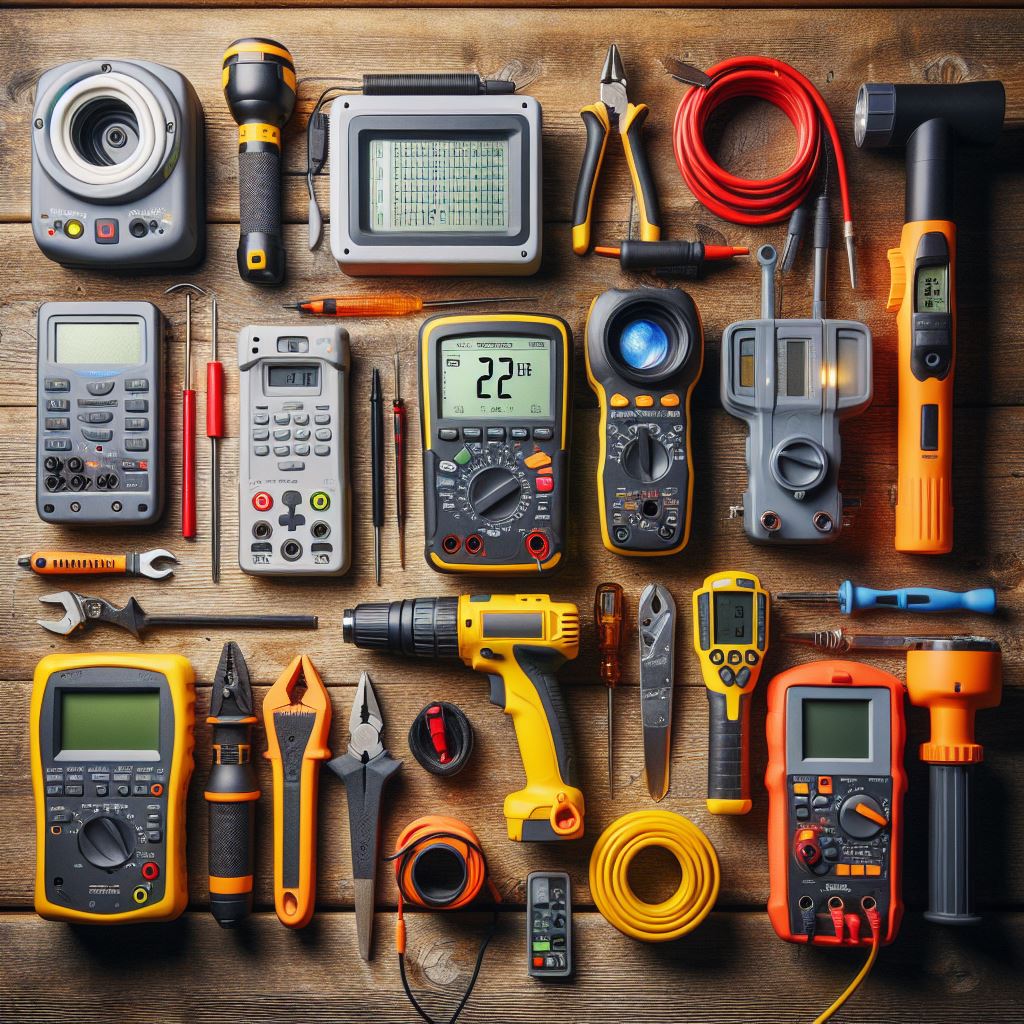
To assess the structural integrity of a property, a home inspector needs a sturdy ladder. A ladder allows inspectors to access roofs, attics, and other elevated areas safely. It is crucial to choose a ladder that is appropriate for the height and type of property being inspected. Inspectors should also ensure that their ladder is in good condition and regularly inspected for any defects.
A comprehensive home inspection involves checking the electrical system, and for this, a voltage tester is essential. This tool allows inspectors to determine if electrical outlets, switches, and fixtures are functioning correctly and if there are any potential safety hazards. Inspectors should ensure that their voltage tester is properly calibrated and in good working condition.
A gas and carbon monoxide detector is a must-have tool for inspecting properties with gas appliances or heating systems. These detectors can detect the presence of harmful gases, such as carbon monoxide, which is odorless and invisible. Inspectors should regularly test and calibrate their detectors to ensure accurate readings and provide a safe environment during inspections.
In conclusion, a home inspector requires a range of tools and equipment to effectively carry out their duties. From flashlights and moisture meters to thermal imaging cameras and digital cameras, each tool serves a specific purpose in identifying defects and assessing the condition of a property. Additionally, a sturdy ladder, voltage tester, and gas and carbon monoxide detector are essential for ensuring safety during inspections. By equipping themselves with these must-have tools, home inspectors can provide thorough and accurate assessments to their clients, contributing to the integrity of the real estate industry.
Top Tools Every Home Inspector Should Own
Being a home inspector requires a wide range of skills and knowledge. From assessing the structural integrity of a building to identifying potential safety hazards, a home inspector must be equipped with the right tools to perform their job effectively. In this article, we will discuss the top tools that every home inspector should own.
One of the most essential tools for a home inspector is a flashlight. A high-quality flashlight is crucial for inspecting dark and hard-to-reach areas such as crawl spaces, attics, and basements. It allows the inspector to properly examine these areas and identify any potential issues that may be hidden from plain sight. Additionally, a flashlight with adjustable brightness settings can be particularly useful in different lighting conditions.
Another indispensable tool for a home inspector is a moisture meter. This device is used to measure the moisture content in various materials, such as wood, drywall, and concrete. By detecting excessive moisture levels, a home inspector can identify potential water damage, mold growth, or structural issues. A moisture meter is especially important when inspecting areas prone to water leaks, such as bathrooms, kitchens, and basements.
A thermal imaging camera is also a valuable tool for a home inspector. This device uses infrared technology to detect temperature differences in a building’s structure. By capturing thermal images, a home inspector can identify areas of heat loss, insulation deficiencies, and even hidden leaks. This tool is particularly useful for detecting energy inefficiencies and potential insulation problems, which can help homeowners save on heating and cooling costs.
To assess the electrical system of a property, a home inspector should have a multimeter. This versatile tool allows the inspector to measure voltage, current, and resistance in electrical circuits. By using a multimeter, a home inspector can identify faulty wiring, overloaded circuits, and potential electrical hazards. It is crucial for ensuring the safety of the property’s occupants and preventing electrical fires.
A ladder is an essential tool for a home inspector, as it enables them to access areas that are otherwise difficult to reach. Whether it’s inspecting the roof, gutters, or upper levels of a building, a sturdy and adjustable ladder is a must-have. It is important for a home inspector to prioritize safety when using a ladder and ensure that it is in good condition before each use.
In addition to these tools, a home inspector should also have a comprehensive set of hand tools. This includes screwdrivers, pliers, wrenches, and tape measures. These tools are necessary for inspecting various components of a property, such as doors, windows, plumbing fixtures, and appliances. They allow the inspector to assess the condition and functionality of these items, ensuring that they meet safety standards.
In conclusion, being a home inspector requires a range of specialized tools to effectively assess the condition of a property. From flashlights and moisture meters to thermal imaging cameras and multimeters, each tool serves a specific purpose in identifying potential issues and ensuring the safety of the property’s occupants. Additionally, a ladder and a set of hand tools are essential for accessing hard-to-reach areas and inspecting various components of a building. By investing in these top tools, a home inspector can provide thorough and accurate assessments, helping homeowners make informed decisions about their properties.
A Comprehensive Guide to Home Inspection Tools
Home inspection is a crucial step in the process of buying or selling a property. It involves a thorough examination of a house’s condition, identifying any potential issues or defects that may affect its value or safety. To conduct a successful home inspection, a home inspector must have the right tools at their disposal. In this article, we will discuss the essential tools that every home inspector should have in their toolkit.
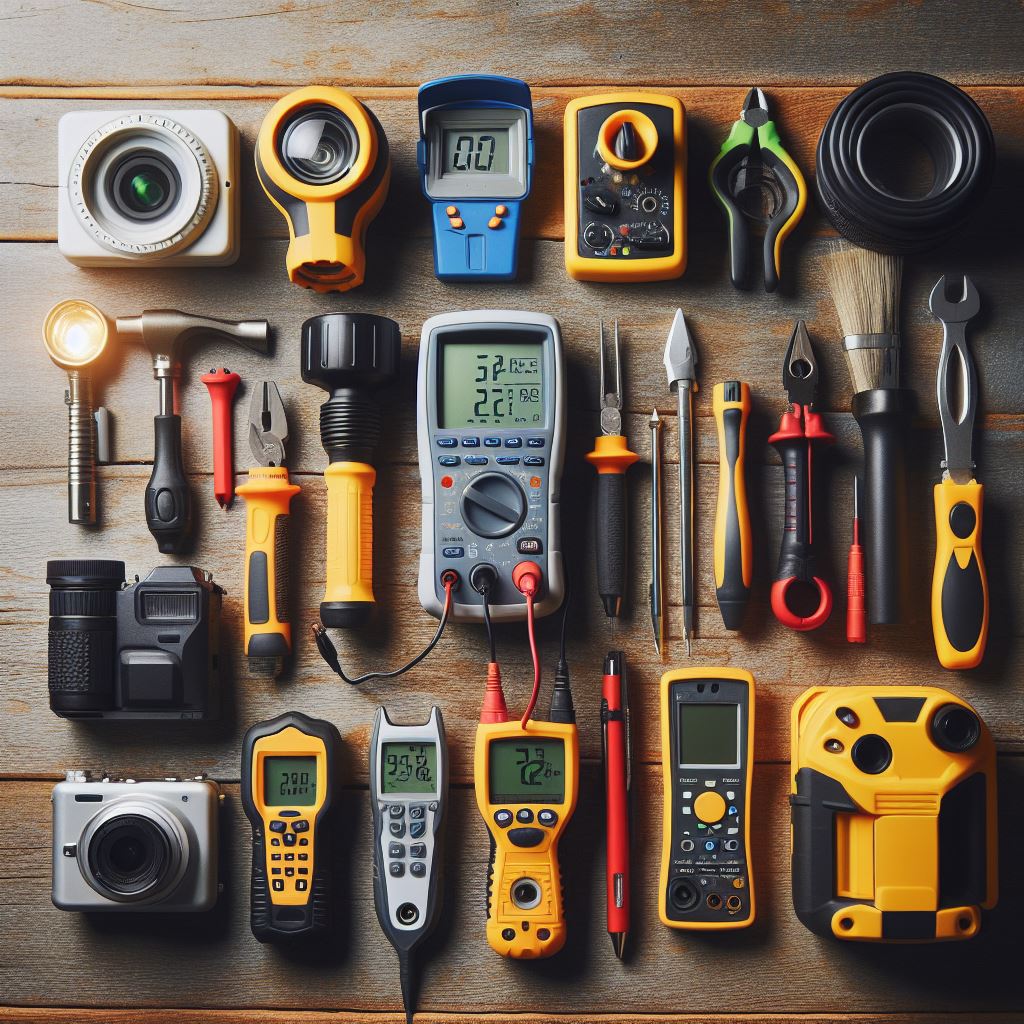
One of the most basic tools that a home inspector needs is a flashlight. A good flashlight is essential for illuminating dark areas such as crawl spaces, attics, or basements. It allows the inspector to see clearly and identify any potential problems that may be hidden from view. Additionally, a flashlight with a strong beam can help the inspector spot leaks or water damage in areas that are not easily accessible.
Another indispensable tool for a home inspector is a moisture meter. This device is used to measure the moisture content in various materials, such as wood or drywall. Excessive moisture can lead to mold growth or structural damage, so it is crucial to identify any areas of concern. A moisture meter helps the inspector determine if there are any hidden leaks or water intrusion issues that may not be visible to the naked eye.
A thermal imaging camera is another valuable tool for a home inspector. This device uses infrared technology to detect temperature differences in a building’s structure. It can help identify areas of heat loss, insulation deficiencies, or even electrical problems. By using a thermal imaging camera, the inspector can pinpoint potential energy inefficiencies or safety hazards that may need further investigation.
To assess the structural integrity of a property, a home inspector needs a good set of hand tools. These may include a tape measure, a level, a screwdriver set, and a hammer. These tools allow the inspector to check for any uneven surfaces, loose or damaged components, or signs of poor construction. They are essential for evaluating the overall quality and safety of a property.
In addition to hand tools, a home inspector should also have specialized equipment for testing electrical systems. A voltage tester, for example, is used to check if electrical outlets or fixtures are properly grounded and functioning correctly. A circuit analyzer can help identify any wiring issues or overloaded circuits. These tools are crucial for ensuring the safety of the property’s electrical system.
Furthermore, a home inspector should have a gas and carbon monoxide detector. These devices are used to detect the presence of harmful gases, such as carbon monoxide or natural gas leaks. They are essential for identifying potential health hazards and ensuring the safety of the property’s occupants.
Lastly, a home inspector should have a comprehensive set of documentation tools. This includes a digital camera for capturing visual evidence of any issues or defects found during the inspection. A notepad and pen are also necessary for taking notes and documenting important details. Additionally, a laptop or tablet can be used for generating inspection reports and organizing all the collected data.
In conclusion, being a home inspector requires a wide range of tools to effectively assess the condition of a property. From basic tools like flashlights and hand tools to specialized equipment like thermal imaging cameras and moisture meters, each tool plays a crucial role in identifying potential issues or defects. By having the right tools at their disposal, home inspectors can provide accurate and comprehensive reports that help buyers and sellers make informed decisions about a property.
Key Tools for a Successful Home Inspection Career
A successful career as a home inspector requires a set of key tools that are essential for conducting thorough inspections. These tools not only enable inspectors to identify potential issues and hazards but also help them provide accurate and detailed reports to their clients. In this article, we will discuss the essential tools that every home inspector should have in their arsenal.
First and foremost, a reliable flashlight is an indispensable tool for any home inspector. Inspecting dark and hard-to-reach areas such as crawl spaces, attics, and basements is a common part of the job. A high-quality flashlight with a strong beam will ensure that inspectors can properly assess these areas and identify any potential problems.
Another crucial tool for home inspectors is a moisture meter. This device allows inspectors to detect the presence of moisture in various materials, such as wood, drywall, and concrete. Moisture intrusion can lead to mold growth, structural damage, and other issues, so being able to accurately measure moisture levels is essential for a thorough inspection.
A digital camera is also an essential tool for home inspectors. Taking clear and detailed photographs of any defects or areas of concern helps inspectors document their findings and provide visual evidence to their clients. These photographs can be included in the inspection report, making it easier for clients to understand the issues and take appropriate action.
In addition to a camera, a tape measure is a must-have tool for home inspectors. Measuring the dimensions of rooms, doorways, and other areas is crucial for assessing the suitability of a property for the client’s needs. Accurate measurements also help inspectors identify potential code violations or safety hazards.
To inspect electrical systems, a voltage tester is an essential tool. This device allows inspectors to check for the presence of electrical current and identify any faulty wiring or electrical hazards. Safety is paramount in home inspections, and a voltage tester helps ensure that inspectors can assess electrical systems without putting themselves at risk.
A gas and carbon monoxide detector is another vital tool for home inspectors. Inspecting gas appliances, such as furnaces and water heaters, requires the ability to detect any leaks or potential carbon monoxide hazards. These detectors provide an added layer of safety and allow inspectors to identify any immediate dangers.
Lastly, a comprehensive set of hand tools is necessary for a home inspector. Screwdrivers, pliers, a utility knife, and other basic tools enable inspectors to access and examine various components of a property, such as electrical panels, plumbing fixtures, and HVAC systems. These tools also come in handy for minor repairs or adjustments during the inspection process.
In conclusion, a successful career as a home inspector requires a range of essential tools. From flashlights and moisture meters to cameras and tape measures, these tools enable inspectors to conduct thorough inspections and provide accurate reports to their clients. Additionally, voltage testers, gas detectors, and a set of hand tools are crucial for assessing electrical and gas systems, as well as accessing and examining various components of a property. By equipping themselves with these key tools, home inspectors can ensure that they are well-prepared to meet the demands of their profession and provide a valuable service to their clients.
The Ultimate Checklist of Tools for Home Inspectors
Being a home inspector requires a wide range of tools to effectively assess the condition of a property. These tools not only help in identifying potential issues but also aid in providing accurate and detailed reports to clients. In this article, we will discuss the essential tools that every home inspector should have in their arsenal.
First and foremost, a reliable flashlight is an absolute necessity. Inspecting dark and hard-to-reach areas such as crawl spaces, attics, and basements is a regular part of a home inspector’s job. A high-quality flashlight with a strong beam will ensure that no corner goes unnoticed. Additionally, having a backup flashlight is always a good idea to avoid any unexpected situations.
Next on the list is a moisture meter. This tool is crucial for detecting moisture levels in various materials such as wood, drywall, and concrete. Excessive moisture can lead to mold growth and structural damage, so it is essential to identify and address these issues promptly. A moisture meter helps in pinpointing areas of concern and provides valuable information for further investigation.
Thermal imaging cameras are becoming increasingly popular among home inspectors. These cameras use infrared technology to detect temperature variations, allowing inspectors to identify hidden issues such as insulation gaps, water leaks, and electrical problems. By capturing thermal images, inspectors can provide visual evidence to clients, enhancing the credibility of their reports.
A digital camera is another indispensable tool for home inspectors. It enables them to document their findings visually, providing a comprehensive record of the property’s condition. High-resolution images can be included in inspection reports, making it easier for clients to understand the identified issues. Moreover, these images serve as a reference for future inspections or discussions with contractors.
To assess the structural integrity of a property, a good quality level is essential. A level helps in determining if floors, walls, and ceilings are properly aligned. It is particularly useful for identifying sloping or uneven surfaces, which may indicate foundation problems. A laser level is even more precise and allows for accurate measurements over longer distances.
A circuit tester is a must-have tool for inspecting electrical systems. It helps in identifying faulty wiring, improper grounding, and other potential hazards. By testing outlets, switches, and electrical panels, home inspectors can ensure the safety of the property and its occupants. It is crucial to invest in a reliable circuit tester to avoid any electrical mishaps during inspections.
In addition to these specialized tools, a home inspector should always carry a comprehensive set of hand tools. These include screwdrivers, pliers, a tape measure, a utility knife, and a hammer. These basic tools come in handy for various tasks, such as removing electrical panel covers, opening access panels, or examining plumbing fixtures.
Lastly, a comfortable and durable tool bag or toolbox is essential for organizing and transporting all the necessary equipment. It should have multiple compartments and pockets to keep tools organized and easily accessible during inspections. A well-organized tool bag not only saves time but also ensures that no tool is left behind.
In conclusion, being a home inspector requires a wide range of tools to effectively assess the condition of a property. From flashlights and moisture meters to thermal imaging cameras and digital cameras, each tool serves a specific purpose in providing accurate and detailed reports. Additionally, hand tools and a reliable tool bag are essential for carrying out various tasks during inspections. By equipping themselves with these tools, home inspectors can ensure thorough inspections and provide valuable insights to their clients.
Essential Tools and Gadgets for Home Inspections
Home inspections are a crucial part of the real estate industry, providing potential buyers with valuable information about the condition of a property. To conduct a thorough and accurate inspection, home inspectors rely on a variety of tools and gadgets. These tools not only help them identify potential issues but also enable them to provide detailed reports to their clients. In this article, we will discuss the essential tools and gadgets that every home inspector should have in their arsenal.
One of the most basic tools that every home inspector needs is a flashlight. A high-quality flashlight with a strong beam is essential for illuminating dark and hard-to-reach areas, such as crawl spaces and attics. It allows inspectors to spot potential problems, such as water damage or structural issues, that may not be visible to the naked eye. Additionally, a flashlight with adjustable brightness settings can be particularly useful when inspecting areas with varying lighting conditions.
Another indispensable tool for home inspectors is a moisture meter. This device is used to measure the moisture content in various materials, such as wood, drywall, and concrete. By detecting excessive moisture levels, inspectors can identify potential mold growth or water damage, which are common issues in many homes. A moisture meter helps inspectors provide accurate assessments and recommendations to their clients, ensuring that they are well-informed about the condition of the property.
Infrared thermometers are also essential tools for home inspectors. These devices use infrared technology to measure surface temperatures without making direct contact. By scanning walls, ceilings, and floors, inspectors can identify temperature variations that may indicate insulation problems or hidden leaks. Infrared thermometers are particularly useful for detecting energy inefficiencies, as they can pinpoint areas where heat or cold air is escaping, leading to higher utility bills for homeowners.
To inspect electrical systems, home inspectors need a voltage tester. This tool allows them to check if electrical outlets, switches, and fixtures are properly grounded and functioning safely. By detecting faulty wiring or improper installations, inspectors can alert homeowners to potential fire hazards and recommend necessary repairs or upgrades. A voltage tester is an essential tool for ensuring the safety of both the inspector and the future occupants of the property.
A comprehensive home inspection also involves assessing the structural integrity of a property. To do this, inspectors rely on tools such as a level and a tape measure. A level helps inspectors determine if surfaces, such as floors and walls, are properly aligned. It ensures that the property is structurally sound and free from any significant tilting or settling issues. A tape measure, on the other hand, allows inspectors to accurately measure dimensions and distances, which is crucial for assessing room sizes and identifying potential space limitations.
In addition to these essential tools, home inspectors may also use gadgets such as a digital camera or a tablet. These devices enable inspectors to document their findings visually and create detailed reports for their clients. By capturing images and videos of potential issues, inspectors can provide visual evidence and enhance the clarity of their reports. Tablets, with their larger screens and note-taking capabilities, also make it easier for inspectors to organize and present their findings in a professional manner.
In conclusion, home inspectors rely on a range of tools and gadgets to conduct thorough and accurate inspections. From flashlights and moisture meters to infrared thermometers and voltage testers, these tools enable inspectors to identify potential issues and provide detailed reports to their clients. Additionally, gadgets like digital cameras and tablets enhance the efficiency and professionalism of the inspection process. By equipping themselves with these essential tools and gadgets, home inspectors can ensure that they deliver high-quality services and help buyers make informed decisions about their potential homes.
Tools of the Trade: What Every Home Inspector Needs
What tools do you need to be a home inspector? Being a home inspector requires a specific set of tools to effectively assess the condition of a property. These tools are essential for conducting thorough inspections and providing accurate reports to clients. In this article, we will discuss the various tools that every home inspector needs to have in their arsenal.
One of the most basic tools that a home inspector must have is a flashlight. A good flashlight is essential for illuminating dark areas such as crawl spaces, attics, and basements. It allows the inspector to see clearly and identify any potential issues that may be hidden in the shadows. Additionally, a flashlight with a strong beam can help the inspector spot leaks, cracks, or other signs of damage that may not be immediately visible.
Another crucial tool for a home inspector is a moisture meter. This device is used to measure the moisture content in various materials such as wood, drywall, and concrete. By using a moisture meter, the inspector can identify areas of excessive moisture, which can indicate the presence of leaks, water damage, or mold. This tool is particularly important in areas prone to high humidity or areas that have experienced water-related issues in the past.
A thermal imaging camera is another valuable tool for a home inspector. This device uses infrared technology to detect temperature differences in a building’s structure. By scanning the walls, ceilings, and floors, the inspector can identify areas of heat loss, insulation deficiencies, or even hidden leaks. A thermal imaging camera can provide valuable insights into the energy efficiency of a property and help the inspector identify potential areas of concern.
A digital camera is an essential tool for documenting the condition of a property. Home inspectors often take numerous photos during their inspections to include in their reports. These photos serve as visual evidence of any issues or concerns identified during the inspection. A digital camera allows the inspector to capture high-quality images that can be easily included in the final report.
In addition to these tools, a home inspector should also have a comprehensive set of hand tools. These include a tape measure, a screwdriver set, a voltage tester, and a ladder. These tools are necessary for measuring dimensions, testing electrical outlets, and accessing hard-to-reach areas. A ladder is particularly important for inspecting roofs, gutters, and other elevated areas of a property.
Lastly, a home inspector should have a reliable computer or tablet for generating reports. Most home inspectors use specialized software to create detailed reports that outline their findings and recommendations. These reports are typically shared with clients and serve as a crucial document for future reference. A computer or tablet with internet access is necessary for generating and sending these reports in a timely manner.
In conclusion, being a home inspector requires a range of tools to effectively assess the condition of a property. From basic tools like flashlights and tape measures to more advanced devices like thermal imaging cameras and moisture meters, each tool plays a vital role in conducting thorough inspections. Additionally, a digital camera and a computer or tablet are essential for documenting findings and generating detailed reports. By having these tools at their disposal, home inspectors can provide accurate assessments and valuable insights to their clients.
Building Your Home Inspection Toolkit: Must-Have Tools
A home inspector plays a crucial role in the real estate industry by assessing the condition of a property and identifying any potential issues or hazards. To effectively carry out this task, a home inspector must have a well-equipped toolkit. In this article, we will discuss the essential tools that every home inspector should have in their arsenal.
First and foremost, a reliable flashlight is an absolute must-have tool for any home inspector. Inspecting dark and hard-to-reach areas such as crawl spaces, attics, and basements is a common part of the job. A high-quality flashlight with a strong beam will enable the inspector to thoroughly examine these areas and identify any hidden problems.
Another indispensable tool for a home inspector is a moisture meter. This device is used to measure the moisture content in various materials, such as wood, drywall, and concrete. Excessive moisture can lead to mold growth, rot, and structural damage. By using a moisture meter, a home inspector can detect and address moisture-related issues before they become major problems.
A digital camera is also an essential tool for a home inspector. Documenting the condition of a property through photographs is crucial for both the inspector and the client. A digital camera allows the inspector to capture clear and detailed images of any defects or areas of concern. These photographs can be included in the inspection report and serve as evidence for negotiations or future reference.
In addition to a digital camera, a home inspector should have a reliable measuring tape. Accurate measurements are necessary for assessing the dimensions of rooms, windows, doors, and other structural elements. A measuring tape with both metric and imperial units will ensure that the inspector can work with any type of measurement system.
To inspect electrical systems, a voltage tester is an indispensable tool. This device allows the inspector to check for the presence of electrical current and identify any potential electrical hazards. It is crucial for ensuring the safety of both the inspector and the property occupants.
A ladder is another essential tool for a home inspector. It enables the inspector to access areas that are not easily reachable, such as roofs, gutters, and high ceilings. A sturdy and adjustable ladder is necessary to ensure the inspector’s safety while conducting inspections at various heights.
Furthermore, a comprehensive toolkit for a home inspector should include a set of screwdrivers, pliers, and wrenches. These basic hand tools are necessary for removing covers, panels, and fixtures during the inspection process. They also come in handy for minor repairs or adjustments that may be required during the inspection.
Lastly, a home inspector should have a reliable gas and carbon monoxide detector. These devices are crucial for detecting any leaks or potential hazards related to gas appliances, heating systems, or fireplaces. Ensuring the safety of the property and its occupants is of utmost importance for a home inspector.
In conclusion, building a well-equipped toolkit is essential for a home inspector to effectively carry out their duties. From a flashlight and moisture meter to a digital camera and measuring tape, each tool serves a specific purpose in assessing the condition of a property. Additionally, tools such as a voltage tester, ladder, and basic hand tools are necessary for inspecting electrical systems and accessing hard-to-reach areas. Lastly, gas and carbon monoxide detectors are crucial for ensuring the safety of the property and its occupants. By having these essential tools, a home inspector can provide a thorough and accurate assessment of a property, benefiting both the client and the real estate industry as a whole.
The Best Tools for Home Inspectors: A Complete Guide
Home inspection is a crucial step in the process of buying or selling a property. It involves a thorough examination of a house’s condition, identifying any potential issues or defects that may affect its value or safety. To perform this task effectively, home inspectors rely on a variety of tools. In this article, we will explore the essential tools that every home inspector should have in their arsenal.
One of the most basic tools for a home inspector is a flashlight. A high-quality flashlight with a strong beam is essential for illuminating dark areas such as crawl spaces, attics, and basements. It allows inspectors to spot hidden defects, such as leaks or structural damage, that may not be visible in normal lighting conditions. Additionally, a flashlight can help inspectors navigate through tight spaces and identify potential safety hazards.
Another indispensable tool for home inspectors is a moisture meter. This device measures the moisture content in various materials, such as wood, drywall, or concrete. Excessive moisture can lead to mold growth, rot, or structural damage, so it is crucial to identify and address any moisture-related issues. A moisture meter helps inspectors detect hidden leaks, water intrusion, or dampness that may not be visible to the naked eye.
Thermal imaging cameras are becoming increasingly popular among home inspectors. These cameras use infrared technology to detect temperature differences in a building’s structure. By capturing thermal images, inspectors can identify areas of heat loss, insulation deficiencies, or electrical problems. Thermal imaging cameras are particularly useful for detecting hidden leaks, energy inefficiencies, or electrical hotspots that may pose safety risks.
To assess the structural integrity of a property, home inspectors rely on a variety of tools, including a digital level and a tape measure. A digital level ensures accurate measurements of slopes, angles, or uneven surfaces, helping inspectors identify potential foundation issues or structural imbalances. A tape measure is essential for measuring room dimensions, door and window sizes, or clearance spaces. These measurements are crucial for evaluating the overall layout and functionality of a property.
Electrical issues are a common concern in home inspections, and inspectors need specialized tools to assess the safety and functionality of a property’s electrical system. A voltage tester is a must-have tool for checking the presence of electrical current and identifying faulty wiring or outlets. Additionally, an outlet tester helps inspectors determine if outlets are properly grounded and wired correctly. These tools are essential for ensuring the safety of a property’s electrical system.
Plumbing problems can significantly impact a property’s value and functionality. To assess the condition of a property’s plumbing system, home inspectors need tools such as a plumbing camera and a water pressure gauge. A plumbing camera allows inspectors to visually inspect pipes for leaks, blockages, or corrosion. A water pressure gauge measures the water pressure in a property’s plumbing system, helping inspectors identify potential issues such as low water pressure or leaks.
In conclusion, being a home inspector requires a comprehensive set of tools to effectively assess a property’s condition. From flashlights and moisture meters to thermal imaging cameras and electrical testers, each tool plays a crucial role in identifying potential issues or defects. By investing in the right tools and staying up-to-date with technological advancements, home inspectors can provide accurate and reliable assessments, ensuring the safety and satisfaction of their clients.
